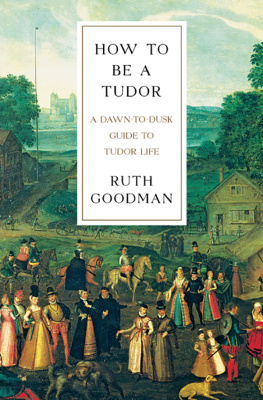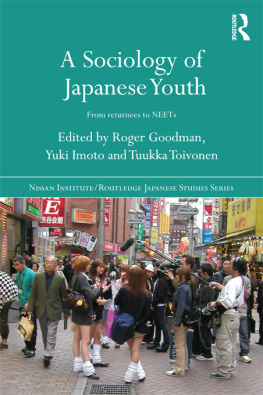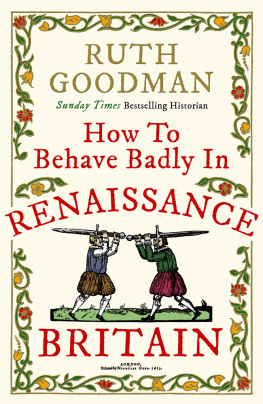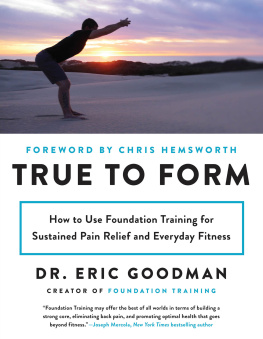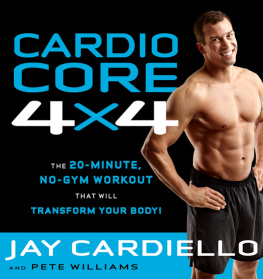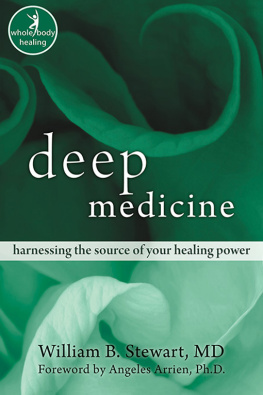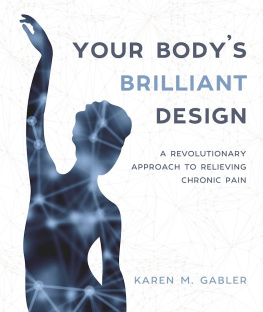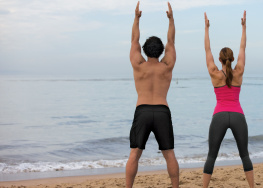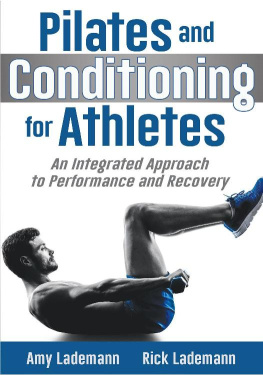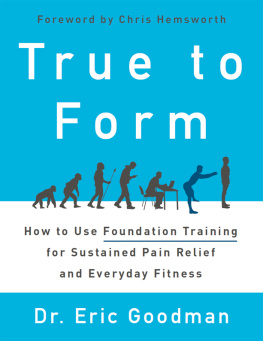Contents
Guide
To my wife and only Sun.
To close family and friends.
To the students who have helped me share Foundation Training.
With appreciation for what I got wrong, finding what felt right.
Contents
Wow, Dr. Eric Goodmans new book, Foundations of Health, is a comprehensive and fascinating read that explores the connection between the mind and body.
I was fortunate to meet Eric, or Air as I call him, back in 2009, while I was working out with a fellow named Peter Park in Santa Barbara preparing for a movie. I was having terrible, debilitating back pain. I began working with Eric on my issues and his approach really helped me improve my overall health and strength. As a matter of fact, just recently, Eric told me he made his very first Foundation Training tape on my behalf, way back when.
Eric has spent years studying human physiology and movement and putting it into practice. He has helped me gain a better understanding of the physical, mental, and emotional aspects of being alive and how important it is to acknowledge these connections to heal. There are relatable metaphors throughout his book about pain in the body, which I found so interesting and inspiring. You may have a pain somewhere in your body thats not really being caused by the particular area where the pain is coming from. Learning to interpret the signals the body is giving, and how to respond to the signals, are important parts of well-being. The whole idea about pain being information, and reacting to that information properly, is the key to healing ourselves.
Lets say theres a light and its not on so you think theres something wrong with the light. You cant figure out how to turn the light on. Youre going to the bulb, youre looking at it until you realize that youve got to go over to the light switch on the wall. The light doesnt turn on where the light actually is, or where you think it should be, you have to go to its energy source to flip the switch. The body works in a very similar way.
I remember I had a gig, playing guitar with my band, The Abiders. My thumb was killing me. My whole hand and grip were just terrible. I couldnt bar a chord on my guitar. I called up Eric to see if he had any suggestions.
He said, Im going to tell you how to fix it right now. Find the sensitive spot in your elbow, put pressure on this point until it hurts, keep the pressure on it, and open and close your hand ten times.
I said, No Eric, its not in my elbow.
He said, Listen to me, do what Im telling you.
I did what he said to do, and poof! my pain was gone, no joke. All of a sudden, I could move my hand and play guitar.
The human body is amazing in its ability to heal itself, especially in stressful times. Eric expresses the importance of being curious about your physical conditions when presented, about how your body is reporting to you about the stress or situation. He helps us to dance with that stress. Life is a dance, man, and Eric is inviting you to join in. He encourages following the old saying practice makes perfect. Just like playing a musical instrument and practicing, moving up and down the fret board, practicing and getting better. The human body is an instrument to train, practice, and manage until it becomes not second nature, but first nature in how you manage stress, recovery, and your health. Its all connected, man!
Eric continues to help me on many fronts with my physical health. He offers me mental and spiritual boosts with his knowledge. Erics visionary approach to mindful movement and his teachings to harness the bodys natural ability to heal is powerful. I am so grateful for Erics guidance, friendship, and knowledge all of these years. He has helped me gain new insight, and hes given me the tools I use for a pain-free existence.
I encourage anyone who is interested in the connection between the mind, body, and healing to take a deep dive into Erics work and to dance the dance of self-healing.
Jeff Bridges
I didnt arrive where I am today by design, Ill admit. I attended a traditional chiropractic school and was taught the standard subjects: anatomy and physiology, diagnosis and treatment. But as someone who actively seeks new information, who is deeply curious about the body, I never stopped learning. The more I learned, the more seemingly disparate protocols began to coalesce. The connections between different ways of healing just kept happening. Things Id long suspected turned out to be true. Ideas Id flirted with were suddenly justified in the latest scientific journals. Commonalities from patients experiences began to make sense.
From all of this growing and connecting, all of these wanderings and discoveries, a unified theory emergedone that focuses mostly on the concept of pain. I have come to realize that much of what we think we know about painwhat it means and how to treat itis wrong. We fear and avoid the wrong things, and we look to the wrong places for solutionswhich keeps us from finding immediate relief. Ultimately, it hampers us from living healthy lives in the long term. In the fifteen years Ive been treating patients, my definition of what pain isindeed, of what health looks and feels likehas evolved dramatically. Its grown more expansive, encompassing a wider and wider range of disciplines. Based on personal experience, sage advice from my peers, stories from my patients, and the latest scientific research, Ive developed a theory of why things go wrong in our bodies and what we need to do to not only fix those things but to potentially prevent them from happening in the first place. I was thrilled when everything came into focus and I could pass on my wisdom to the people I treat; its been transformative to my practice.
Foundations of Health is a great leap forward for me, moving beyond the standard terrain of biomechanics and spinal adjustments to incorporate other complementary modalities of care that, when employed together, can help you become pain free and set you on the path for a healthy, vibrant life. Some of these ideas have come to light relatively recently, so the exciting new science behind them is still emerging. But this journey started long ago, at a skateboard camp in Woodward, Pennsylvania, when I was only fifteen years old.
LEARNING FROM PAIN
In the summer of 1996, at Camp Woodward, an action sports camp in Pennsylvania, I dislocated my shoulder for the first time. Even after surgery, the injury meant I could no longer play hockey, which was my greatest passion and which I had planned to pursue in college.
As devastating as it was to have that future foreclosed, the loss also led me to an opportunity to shift, to grow in a radically new way. The one bright spot in my rough postsurgical recovery (twelve weeks in a brace) was rehabilitation with a gifted physical therapist named Chris. He taught me how my shoulder actually worked, explaining why my tendons had torn and how stabilizing the shoulder would relieve the pressure. He ended up fundamentally changing how I thought about the human body.
From there, Chris introduced me to weight training, and after I had worked with him for a year, both my shoulders felt more powerful than they had before I was injured. He showed me what it feels like when the support system around a joint or an injury is protected through strength. And he didnt just teach me what to do, he taught me why I needed to do it, the theory behind the practice. I felt better than I ever had, and I knew instinctually that I probably hadnt needed that operation as much as I needed the right kind of strength training to solve for that particular injury.
This was more than just the beginning of my journey with pain. My damaged shoulder and subsequent rehab led to the most intense spark of curiosity I had ever felt. I was connecting what I knew (my own sensations of pain and strength) with what I didnt know but very much wanted to (how the human body works). As I would come to realize, experience is the only way I know how to learn, and its the only way I know how to teach: by leaning into what we feel in our own bodies and lives. Instead of running away from pain, I learned to listen to it and let it teach me something. That listening is at the heart of my entire philosophy.


